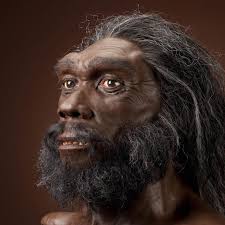These first modern humans are surprisingly shadowy. We know less about ourselves, curiously enough, than about almost any other line of hominids. It is odd indeed, as Tattersall notes, "that the most recent major event in human evolution—the emergence of our own species—is perhaps the most obscure of all." Nobody can even quite agree where truly modern humans first appear in the fossil record. Many books place their debut at about 120,000 years ago in the form of remains found at the Klasies River Mouth in South Africa, but not everyone accepts that these were fully modern people. Tattersall and Schwartz maintain that "whether any or all of them actually represent our species still awaits definitive clarification."

The first undisputed appearance of Homo sapiens is in the eastern Mediterranean, around modern-day Israel, where they begin to show up about 100,000 years ago—but even there they are described (by Trinkaus and Shipman) as "odd, difficult-to-classify and poorly known." Neandertals were already well established in the region and had a type of tool kit known as Mousterian, which the modern humans evidently found worthy enough to borrow. No Neandertal remains have ever been found in north Africa, but their tool kits turn up all over the place. Somebody must have taken them there: modern humans are the only candidate. It is also known that Neandertals and modern humans coexisted in some fashion for tens of thousands of years in the Middle East. "We don't know if they time-shared the same space or actually lived side by side," Tattersall says, but the moderns continued happily to use Neandertal tools—hardly convincing evidence of overwhelming superiority. No less curiously, Acheulean tools are found in the Middle East well over a million years ago, but scarcely exist in Europe until just 300,000 years ago. Again, why people who had the technology didn't take the tools with them is a mystery.












